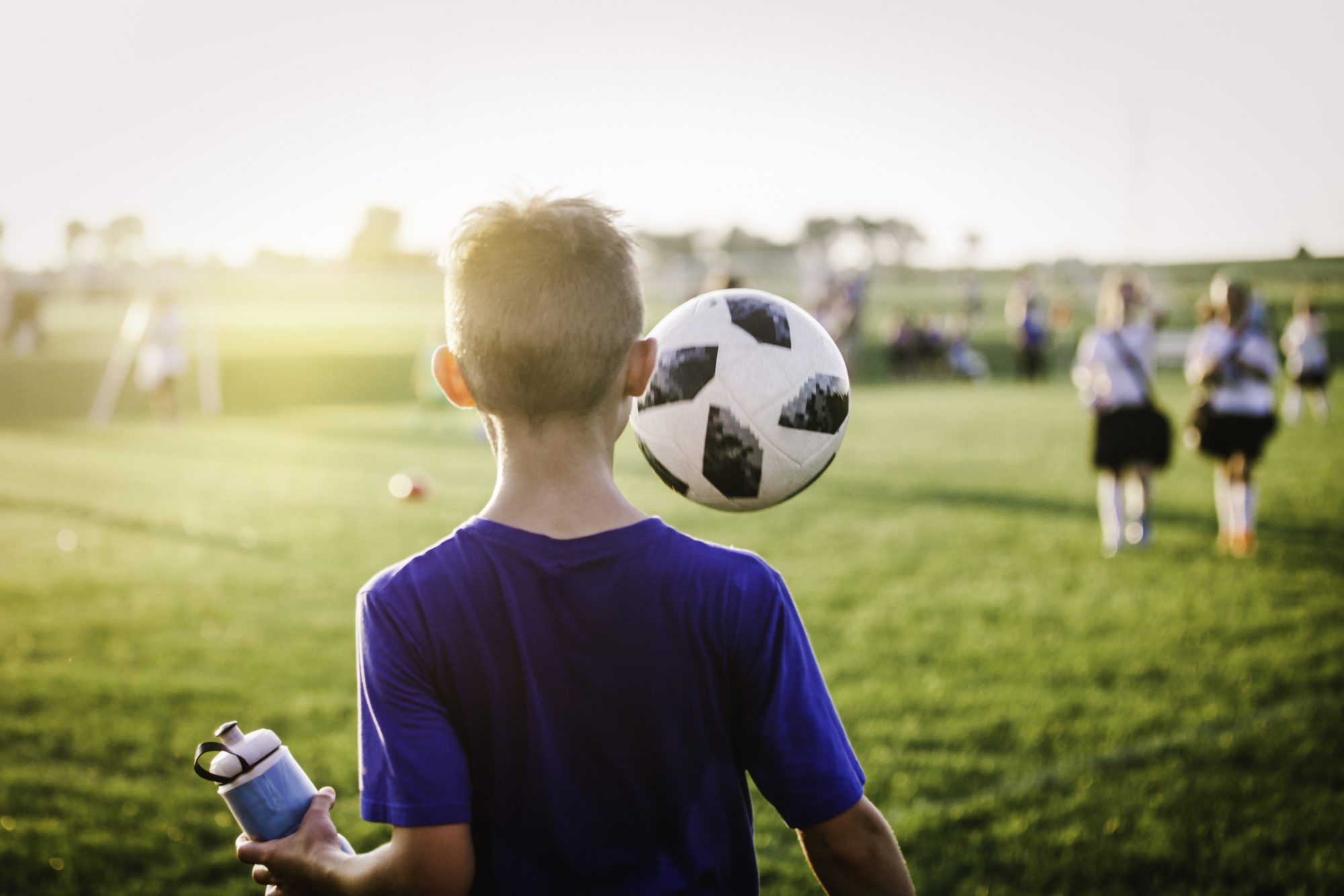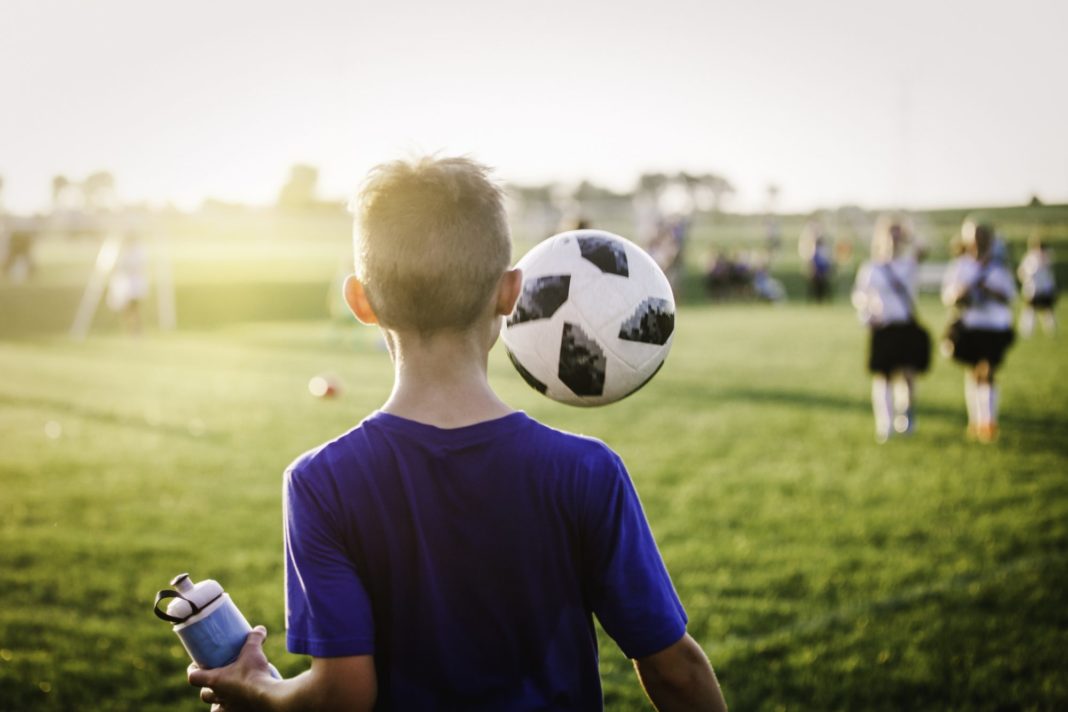Sports have resumed after a pandemic hiatus and young athletes are back on the fields. But health officials are warning extracurricular activities and sports have caused COVID-19 outbreaks in young people. These activities tend to create a cluster where the virus can spread.
"We're finding out that it's the team sports where kids are getting together, obviously many without masks, that are driving it—rather than in-the-classroom spread," Anthony Fauci, M.D., National Institute of Allergy and Infectious Diseases director (NIAID), told Good Morning America in April.

In an April press briefing, Rochelle Walensky, M.D., M.P.H., the Centers for Disease Control and Prevention (CDC) director, spoke about the spread in young people through sports and extracurricular activities, and said, "We know that these increases are due in part to more highly transmissible variants, which we are very closely monitoring." She also pointed out CDC guidance says these activities should be limited.
If you're eager to get your kid back on a team after a year of isolation, you're not alone. There's still a risk of catching COVID, but experts say there are ways to keep your little athlete safe until kids under 16 are approved to get the vaccine. Here's what they want parents to know.
Sports and COVID cases
Experts aren't surprised by the findings since standard measures normally taken to prevent the spread of COVID-19—mask wearing and social distancing—aren't always taking place when sports are involved, especially indoors.
"The clear-cut fork in the road is indoors versus outdoors," says Jonathan Baktari, M.D., a triple board-certified physician with specialties in internal medicine, pulmonary and critical care medicine, and a vaccine and COVID-19 expert. "This is an upper respiratory virus, and upper respiratory viruses are transmitted by aerosol and airborne transmission. So just by definition, anything that's transmitted airborne, is going to have a more difficult time outdoors than indoors."
That means sports like wrestling, basketball, and volleyball, which typically take place indoors, are more of a risk. A Florida wrestling tournament, for example, spread COVID to dozens of students in December. But the degree of contact plays a role too, even when it comes to outdoor sports. For example, kids who play baseball will have less contact with other players than those who play football.
Benefits of Sports for Kids
Making the decision of whether your kid should play sports during the pandemic or not can be difficult, especially with reports about COVID cases being high across the country. But experts agree sports are critical for kids. They serve as a source for exercise, socialization, and personal development, says Michael B. Grosso, M.D., F.A.A.P., New York-based Northwell Health pediatrician and assistant professor of pediatrics at Hofstra University.
It's also necessary to take their mental health into consideration. Drew Watson, M.D., M.S., chief medical advisor at Elite Clubs National League, a leading youth soccer development platform, points to a survey conducted by the group that found the number of adolescent athletes reporting moderate to severe symptoms of depression more than tripled after school and sports closures last spring. "Considering the dramatic and wide-ranging physical and mental health benefits of sport participation for children, my hope is that we can successfully work to minimize risk off the field while still providing the opportunities to play that so many kids truly need," says Dr. Watson.
Keeping Young Athletes Safe
The good news is there are steps to take to mitigate the risk if your kids are playing sports. Here are a few expert suggestions.
Assess your family’s risk.
Every family's situation is different so it's important to assess your own risk. Dr. Grosso suggests parents ask the following questions: How high are COVID rates in the community? How big is the team? Are the team members staying safe off the field? How close are team members? Is the sport being played indoors? What is the immunization status of all participants (currently relevant for teens 16 and over)?
Another important factor is whether the young athlete lives at home with anyone high-risk. "We are not seeing an increase in pediatric hospitalizations due to COVID, but we are concerned in the transmission to vulnerable adults involved with the athletes," says Steven Abelowitz, M.D. F.A.A.P., medical director and president of Coastal Kids Pediatric Medical Group with several locations in California.
Pay attention to safety measures.
It's important to make sure sports leagues are following CDC guidelines, which now say fully vaccinated people do not need to wear masks outdoors unless in crowded venues and settings. Leagues should also be following regional and local CDC public health guidelines. "Each community may need to make adjustments to meet its unique needs and circumstances," Dr. Abelowitz points out. The same goes for school athletic programs, as well. Communicate with them and ask questions to ensure safety measures are being taken.
Are they doing everything possible to mitigate the risk of spread? Ways to do this include wearing masks, practicing hand hygiene, excluding anyone with symptoms, socially distancing when possible, and limiting the number of observers.
Communicate with your kids.
It's also a good idea to reiterate safety health measures to your young athletes. Dr. Baktari says parents can also remind them to avoid high-fiving, hugging, huddling to celebrating, or any other behavior that although may come naturally on the field, now poses a threat.
Keep in mind, there is hope on the horizon as more and more people are getting vaccinated, says Dr. Baktari. "The good news is the odds are tipping in our favor because really the major issue during the pandemic was that youth infected could spread it to vulnerable people," says Dr. Baktari. "But now that we have around two-thirds of 65-year-olds in this country already vaccinated, some of that potential downside to youth sports is gone."
Clinical trials are also taking place for kids 6 months to under 12 years old, and Pfizer recently announced its vaccine is safe and effective for kids ages 12 to 15. Experts predict a full pediatric vaccine could be available by late 2021.
































